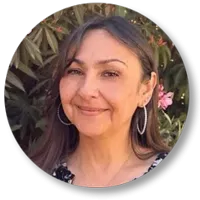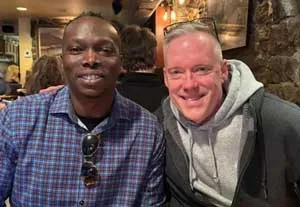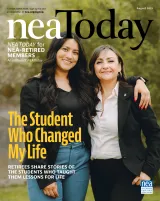NEA Today for NEA-Retired Members asked four former educators to tell us about students who made a lasting and powerful impact on them. These are their moving stories:
Facing loss with courage and resilience
Retired educator: Irma Quaney
Hometown: El Paso, Texas

When I met Berenice Velasquez, she was a quiet, shy student in my senior English class. At the beginning of the year, I had each student write a personal essay in preparation for college admissions and scholarships. Berenice’s story broke my heart. Her mother had died when she was 12 years old. Berenice and her two sisters were left alone. With no one to help, Berenice’s 18-year-old sister took the initiative and became her sisters’ guardian.
Amazingly, Berenice never felt sorry for herself. She never complained and, despite the incredibly difficult circumstances she faced, she continued to work hard for all her teachers.
After Berenice graduated, I thought about her and her sisters often. I hoped they had found their place in the world. Several years later, I saw Berenice working at a restaurant, and we spoke briefly. I was happy to see her doing well, but even so, I continued to wonder how her life turned out.
After I retired in May 2024, I became a membership recruiter for the Texas State Teachers Association (TSTA). One day, I walked into an elementary school to recruit teachers for TSTA, and there, to my surprise, was Berenice. She looked different.
“Are you Mrs. Quaney?” she asked. I knew then that it was her. Berenice told me, “I always think about you. You’re the reason I am here.” Berenice is now a dual language teacher!
As educators, we learned so much through our formal education and professional development, but nothing can teach us about the human condition more than the students who passed through our classroom doors every day. From Berenice, I learned what it means to be brave, kind, and humble, despite a tragic and devastating loss. From her, I learned that the tenacity of the human spirit has no limits, except the ones we impose on ourselves.
Pushing back against hate
Retired educator: Scott Farnsworth
Hometown: Kenosha, Wisconsin

The year was 1994, and I was teaching at our alternative high school. The arrival of more students of color in our district had sparked an openly racist backlash. Some students started wearing Confederate flags and skinhead attire, and racial tensions festered all year long. Feeling disillusioned, I even considered leaving the profession.
Enter two new students who were best friends. One wore a black leather jacket to school each day that was covered in patches and had the words “Ban Racism” painted on the back. One patch on her sleeve showed a swastika with a red, diagonal slash through it, meaning, “No Nazis.” She wore it all year without incident.
Things changed one Thursday in early May. The student was called to the principal’s office during my class. When she returned, she informed me that she had been suspended because the principal had told her that the anti-Nazi patch was “inappropriate.” This put her graduation at risk.
I had an idea. I told the student that if she wanted, I could get 250 buttons with the same image as her “inappropriate” patch delivered by the following Tuesday—the last day of her suspension—with the words “Fight Racism” written across the diagonal slash. If her best friend could recruit some volunteers to help pass them out, what could the principal do? They agreed, even though the friend worried about how the skinheads might react.
When the day arrived, the suspended student and her mother met with the assistant superintendent at the exact moment that 250 students walked into the school building with the buttons proudly pinned to their shirts. The assistant superintendent’s phone rang in the middle of the meeting. It was the principal, frantically trying to figure out what to do. The assistant superintendent put the principal on hold and turned to the student, asking if she would agree to add the words “Fight Racism” to the patch on her jacket. “Absolutely!” she said.
“Then you can return to school today,” the assistant superintendent said.
Even better, with so many students wearing the pins, racial tensions disappeared virtually overnight.
Those two brave students—and their willingness to risk their goals and safety for the greater good—rekindled in me everything that inspired me to be a teacher. I never thought about leaving the profession again.
Providing a shoulder to cry on
Retired educator: Brigitte Tennis
Hometown: Redmond, Washington

In my 10th year as a math teacher, my beautiful mother passed away unexpectedly. When I returned from my bereavement leave three weeks later, it was difficult to focus. Yet, I gathered myself together and pressed on, even though my heart was not totally back “in it.” Many times I wondered if I was making any difference at all.
Around Mother’s Day, I tried valiantly not to show my grief, but hot tears just came to my eyes during a lesson. I kept thinking that I did not have a mother to celebrate like everyone else. That’s when one of my students quietly slipped out of her seat and walked right up to me at the front of the room.
Bold as brass, she said, “Mrs. Tennis, I know it hurts to lose someone. I lost my little brother to SIDS [sudden infant death syndrome] two years ago. It’s okay to cry, and if you want to cry on my shoulder, I am here for you.”
And, you know, I did just that. People rise to become what is needed. I needed a mother figure, and there she was—in a 13-year-old girl.
Before long, the whole class got out of their seats and surrounded me with a huge group hug. I let go and just cherished the feeling of this group of students who wanted to comfort me. I felt much better, and I decided to skip the math lesson for the day. The page we were going over did not matter in that moment. The day went on, but the mood in the classroom had changed.
Yes, there were rules to follow and lessons to teach, but I learned about the power of spontaneity as well as the power of love. Love belongs in the classroom, too, and it was important to make time for it—at any age!
Over the years, I’ve had many students who have made me into a better teacher and a better person, but I will always remember that girl who showed me that teaching people is more important than teaching a math lesson.
Marching to their own drums
Retired educator: Kevin Travers
Hometown: Bristol Township, Pennsylvania

I was a middle school, special education teacher from 1994 until I retired last year. I’ve also been a lifelong drummer and percussionist. I discovered that my self-contained students were really interested in my drumming. I knew I’d never get funding to buy drums, but I was inspired by a friend who used bucket drums in a school musical. It turned out that the plastic drums were a great tool in working with students with special needs—and that a lot of other students wanted to get in on the fun, too.
In 2000, I launched Drummers With Attitude (DWA), an after-school bucket drumming program for students of all skill levels and abilities. It started with six students in one school, but today, thousands have gone through the program, and it is now available throughout Bristol Township School District.
In the early days of the program, Tope Abegunde joined us. He was a little guy, who always had a beautiful smile and a wonderful spirit. Some kids come in with that glow—and Tope had that glow. He was also full of energy and loved channeling it into drumming.
Tope went on to become a drum major at the University of Pittsburgh. He’s 37 now, and I recently reconnected with him. He’s a successful, wonderful young man, who has traveled the world drumming. I’m telling you, I couldn’t be prouder of this guy. It’s a beautiful thing to reconnect with kids that you worked with when they were younger. That’s the beauty of the program—it’s a family.
I’m hopeful that the program will lead to many more students like Tope, who discover a passion for drumming. In 2013, we expanded the program to include a 4-week summer camp. The drummers have performed in New Orleans, at a Philadelphia 76ers game, and even at the White House!
*Some students’ names have been omitted from these stories to protect confidentiality.




